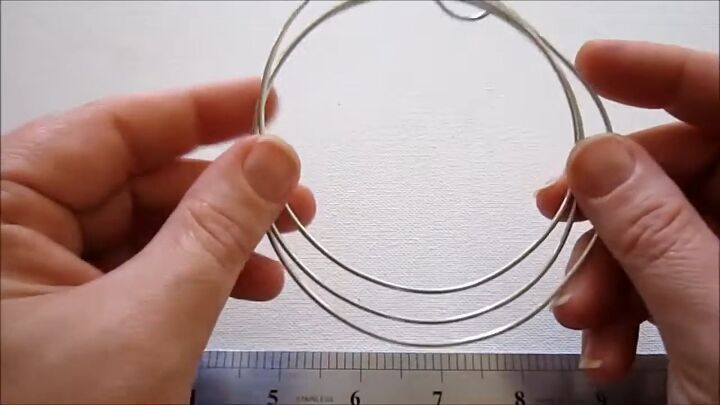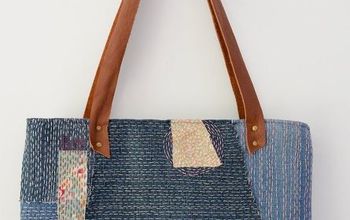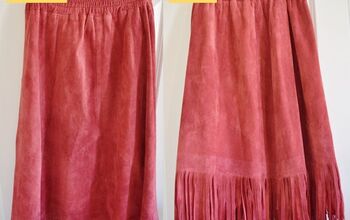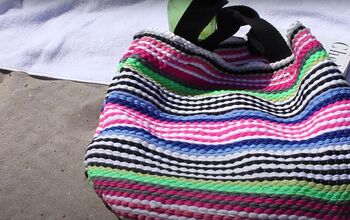How to DIY an Awesome Spiral Pendant Using Wire

In this tutorial, I’m going to show you a fun technique for making a spiral pendant. This DIY pendant is a concentric, folded wire that we make into a spiral pendant necklace. It’s a pretty cool technique, so let’s get started.
Tools and materials:
- Aluminum wire
- Wire cutters
- Chain nose pliers
- Round nose pliers
- Crimp tool (optional)
- Chasing hammer (Optional: nylon or hard plastic hammer)
- Steel block
1. Choose your wire
For the spiral wire wrap, you can use any wire you like. It’s going to change the look and size of your spiral pendant, however.
I’m using the 14-gauge aluminum wire because it’s really easy to bend and use while still being pretty thick.
I’ve also done this with 16-gauge wire and I love that look as well.
2. Cut your wire
Cut your wire to about 14 inches.
3. Remove any kinks
If you have any kinks, you can take them out by pulling on the wire.
However, know that when you do that, it hardens the wire and makes it more difficult to work with.
4. Fold the wire in half with round nose pliers
Gently pull the wire in half, so you can find the middle.
Place the round nose pliers in the middle and bend the wire in half using the pliers. If your wires cross over, pull them back to their own sides.
5. Pinch the end together
Use a crimp tool or chain nose pliers to pinch the end together.
6. Bend the wire into a spiral
Now we’re going to start to make the spiral. Hold the very tip of the wire in your chain nose pliers and bend it up.
Readjust, then bend up again. Continue doing this to create a spiral.
You should be bending both of the wires at the same time and making sure they don’t cross over each other.
Continue until you either get to the end of your wire or your spiral is as big as you would like it to be.
7. Bend the inside wire up
Now you should have two ends, and we’re going to use them to make it a DIY pendant.
The wire on the inside is going to be longer and we’re going to place the chain nose pliers at the top of the spiral.
Bend against them with your fingers so the wire goes straight up.
8. Wrap the shorter wire around the longer one
Wrap the shorter (outside) wire around the longer wire once.
At this point, make any minor adjustments to your spiral and make sure nothing is crossing and everything looks fine.
9. Bend the longer wire into a loop and wrap the ends
Hold the wire in your round nose pliers about a quarter of an inch above the wrapped shorter wire.
Bend the wire down towards you and then around the pliers.
Use your chain nose pliers to wrap it around one more time.
Straighten out the loop so it’s straight above the pendant and centered before wrapping the rest of the wire around the loop.
You only need to wrap it twice, but because this wire is really thick, it went around just once.
10. Cut off the ends
Cut off the ends sticking out.
To make a flush cut, use the back of your wire cutters toward what you’re cutting.
Use the chain nose pliers to make sure the ends aren’t sticking out.
11. Hammer the pendant
When hammering, you have two options.
You can hammer it flat using a chasing hammer like I am. Or, you can just hammer it to harden it without flattening the wire using a rawhide or nylon hammer.
Hold the wire-wrapped loop off to the side and just hammer the spiral itself on a steel block.
Here’s the finished spiral pendant!
Spiral pendant
To wear this, you can slide it on a cord or a chain for a DIY pendant necklace.
In this shot, you can see the difference between the 20-gauge and the 14-gauge wire. Even using the same amount of wire, the 20-gauge is much smaller.
If you want to use this spiral pendant as a charm on a charm bracelet, you might want to go for the smaller gauge.
Let me know what you think about this technique down below!
Enjoyed the project?
Suggested materials:
- Aluminum wire
- Wire cutters
- Chain nose pliers
- Round nose pliers
- Crimp tool (optional)
- Chasing hammer (Optional: nylon or hard plastic hammer)
- Steel block
The author may collect a small share of sales from the links on this page.





































Comments
Join the conversation